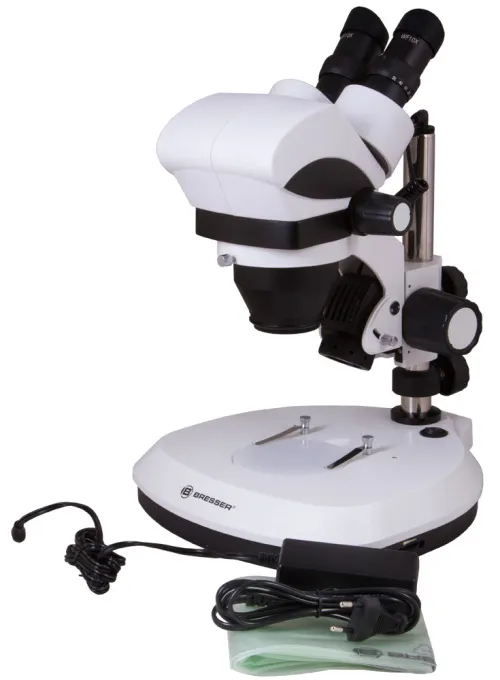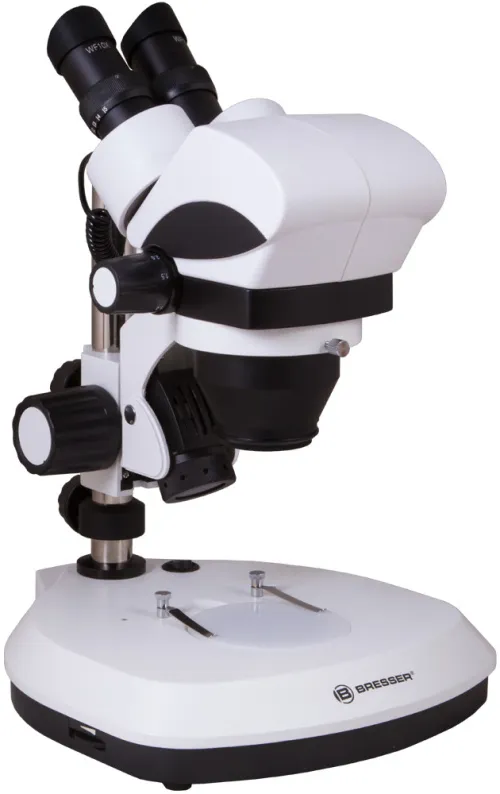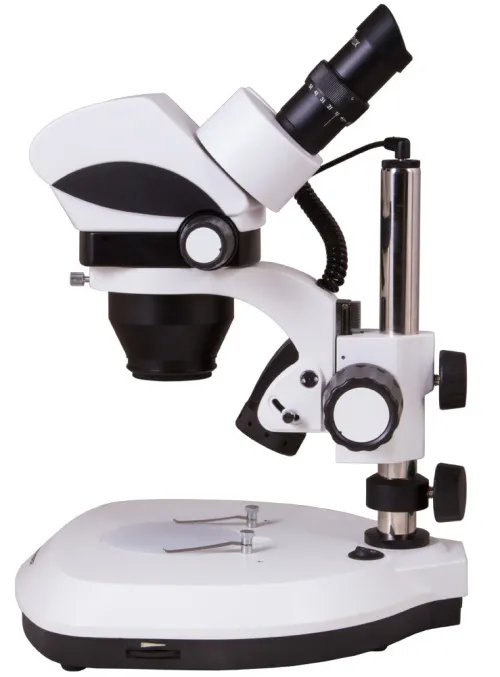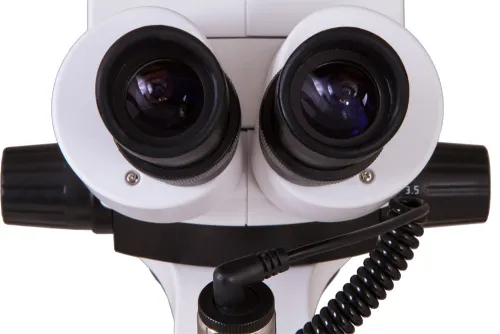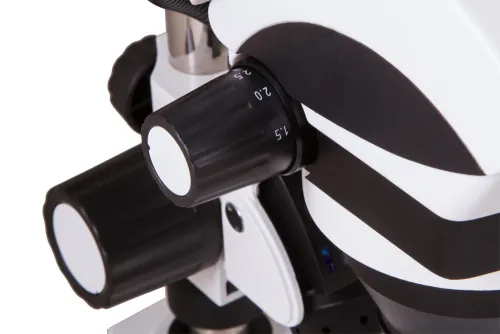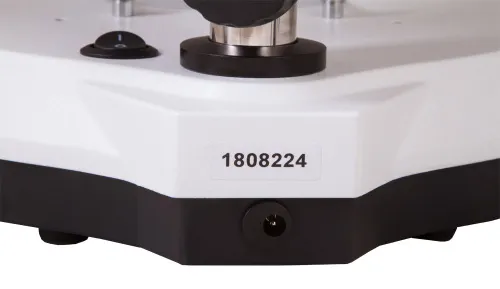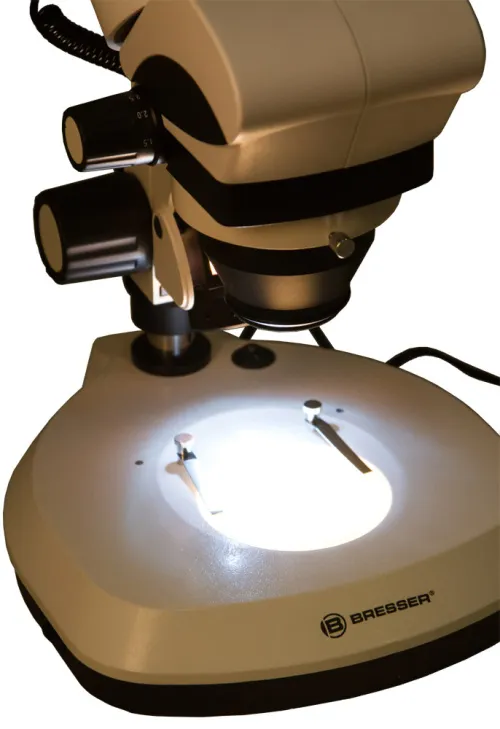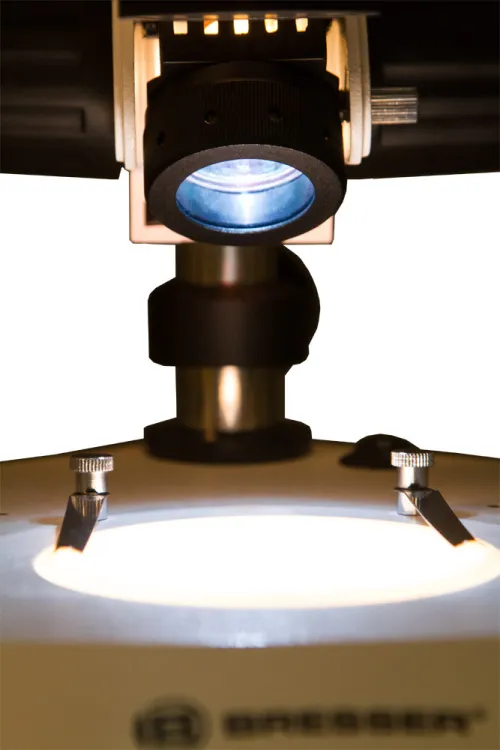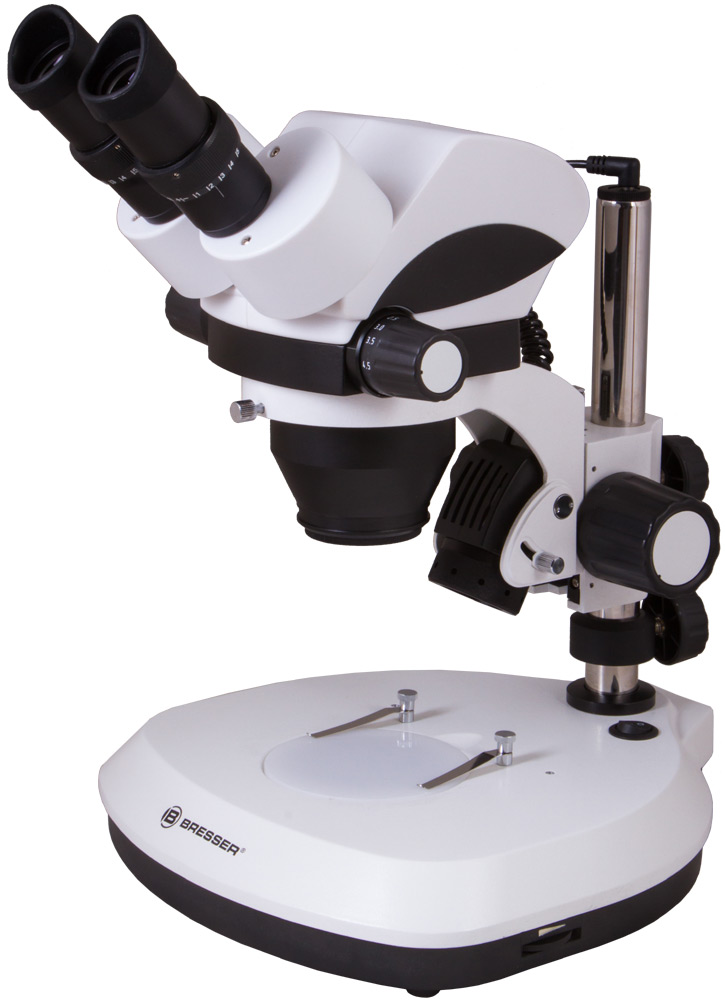Bresser Science ETD 101 7–45x Microscope
Stereo microscope. Binocular head. Magnification: 7–45x
| Product ID | 70516 |
| Brand | Bresser GmbH, Germany |
| Warranty | 2 years |
| EAN | 4007922150222 |
| Package size (LxWxH) | 49x36x36 cm |
| Shipping Weight | 7.16 kg |
The Bresser Science ETD 101 is a high-quality stereo microscope with transmitted light function. It can be used for studies in medicine and health, in farming and forestry, in public security departments, schools and scientific research institutes, as well as for inspection, assembling, and repair of tiny parts in electronics and precision machine industries. Two 10W halogen lamps allow you to observe samples in transmitted light, reflected light, and both at once. Interchangeable wide field eyepieces with rubberized eyecups (WF10x) and a stereo zoom objective (0.7–4.5x) give a 7x to 45x magnification. Individual eye relief and diopters can be easily set.
The kit includes:
- Bresser Science ETD 101 7–45x Microscope
- Dust cover
- 2 rubberized eyecups
- AC Adapter (230V)
- 2x Object plates (frosted glass and black/white)
- User manual
| Product ID | 70516 |
| Brand | Bresser GmbH, Germany |
| Warranty | 2 years |
| EAN | 4007922150222 |
| Package size (LxWxH) | 49x36x36 cm |
| Shipping Weight | 7.16 kg |
| Type | stereo/instrumental |
| Microscope head type | binocular |
| Head | 360 ° rotatable |
| Head inclination angle | 45 ° |
| Magnification, x | 7 — 45 |
| Eyepieces | WF10x (2 pcs.) |
| Objectives | 0.7–4.5x (zoom) |
| Interpupillary distance, mm | 50 — 75 |
| Stage features | two plates: black and white double-sided and matte glass |
| Eyepiece diopter adjustment, diopters | ±5 |
| Focus | coarse |
| Illumination | halogen |
| Brightness adjustment | ✓ |
| Power supply | AC adapter |
| Light source type | 10W |
| Application | for applied research |
| Illumination location | dual |
| Research method | bright field |
| Pouch/case/bag in set | dust cover |
We have gathered answers to the most frequently asked questions to help you sort things out
Find out why studying eyes under a microscope is entertaining; how insects’ and arachnids’ eyes differ and what the best way is to observe such an interesting specimen
Read this review to learn how to observe human hair, what different hair looks like under a microscope and what magnification is required for observations
Learn what a numerical aperture is and how to choose a suitable objective lens for your microscope here
Learn what a spider looks like under microscope, when the best time is to take photos of it, how to study it properly at magnification and more interesting facts about observing insects and arachnids
This review for beginner explorers of the micro world introduces you to the optical, illuminating and mechanical parts of a microscope and their functions
Short article about Paramecium caudatum - a microorganism that is interesting to observe through any microscope


